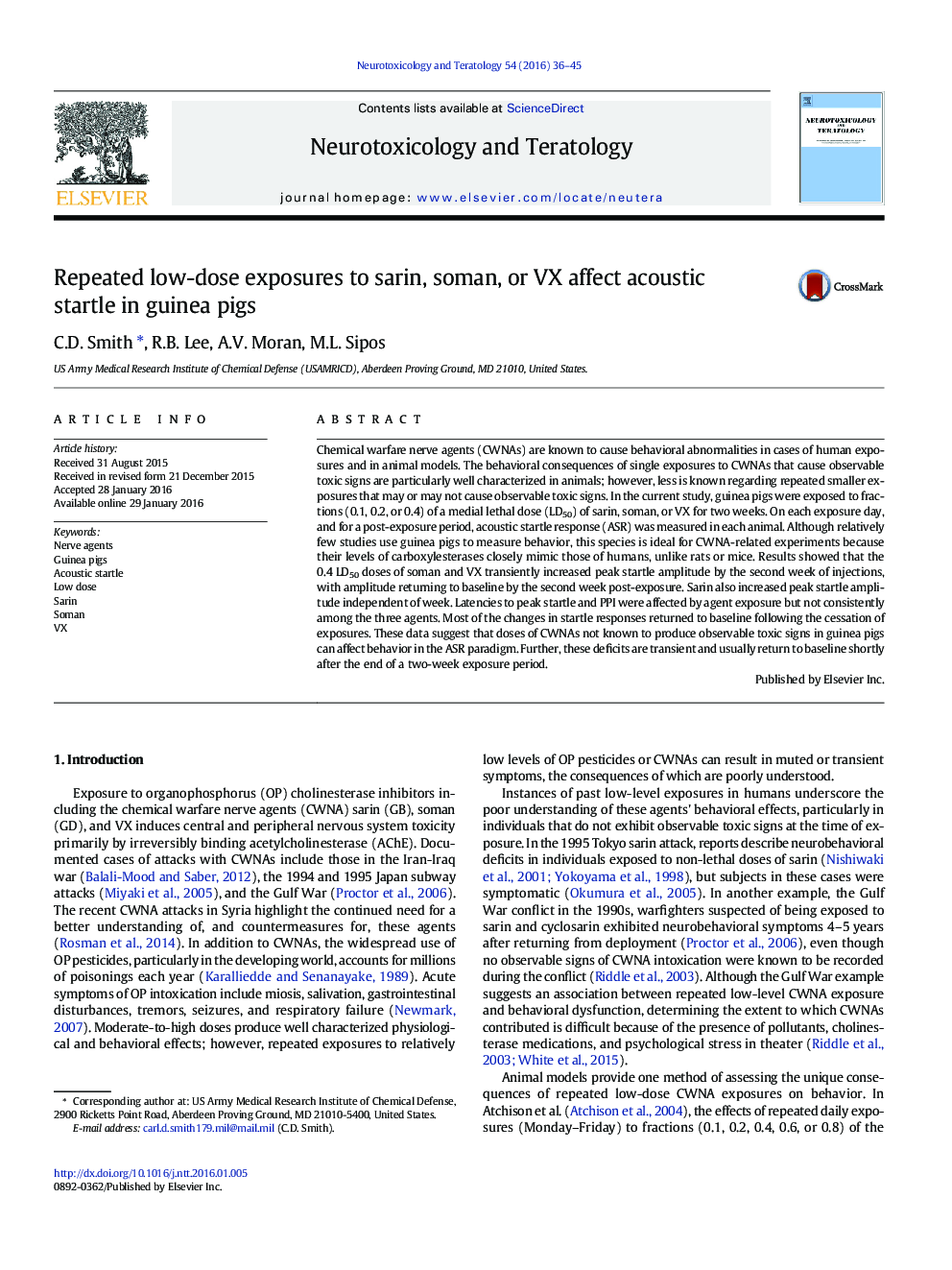| کد مقاله | کد نشریه | سال انتشار | مقاله انگلیسی | نسخه تمام متن |
|---|---|---|---|---|
| 2590834 | 1562082 | 2016 | 10 صفحه PDF | دانلود رایگان |

• Guinea pigs were exposed daily to low doses of GB, GD, or VX for two weeks.
• Acoustic startle responses (amplitude, latency and PPI) were measured each day.
• Up to 0.4 LD50 of each agent affected acoustic startle responses.
• Most measures returned to baseline following the cessation of exposures.
Chemical warfare nerve agents (CWNAs) are known to cause behavioral abnormalities in cases of human exposures and in animal models. The behavioral consequences of single exposures to CWNAs that cause observable toxic signs are particularly well characterized in animals; however, less is known regarding repeated smaller exposures that may or may not cause observable toxic signs. In the current study, guinea pigs were exposed to fractions (0.1, 0.2, or 0.4) of a medial lethal dose (LD50) of sarin, soman, or VX for two weeks. On each exposure day, and for a post-exposure period, acoustic startle response (ASR) was measured in each animal. Although relatively few studies use guinea pigs to measure behavior, this species is ideal for CWNA-related experiments because their levels of carboxylesterases closely mimic those of humans, unlike rats or mice. Results showed that the 0.4 LD50 doses of soman and VX transiently increased peak startle amplitude by the second week of injections, with amplitude returning to baseline by the second week post-exposure. Sarin also increased peak startle amplitude independent of week. Latencies to peak startle and PPI were affected by agent exposure but not consistently among the three agents. Most of the changes in startle responses returned to baseline following the cessation of exposures. These data suggest that doses of CWNAs not known to produce observable toxic signs in guinea pigs can affect behavior in the ASR paradigm. Further, these deficits are transient and usually return to baseline shortly after the end of a two-week exposure period.
Journal: Neurotoxicology and Teratology - Volume 54, March–April 2016, Pages 36–45